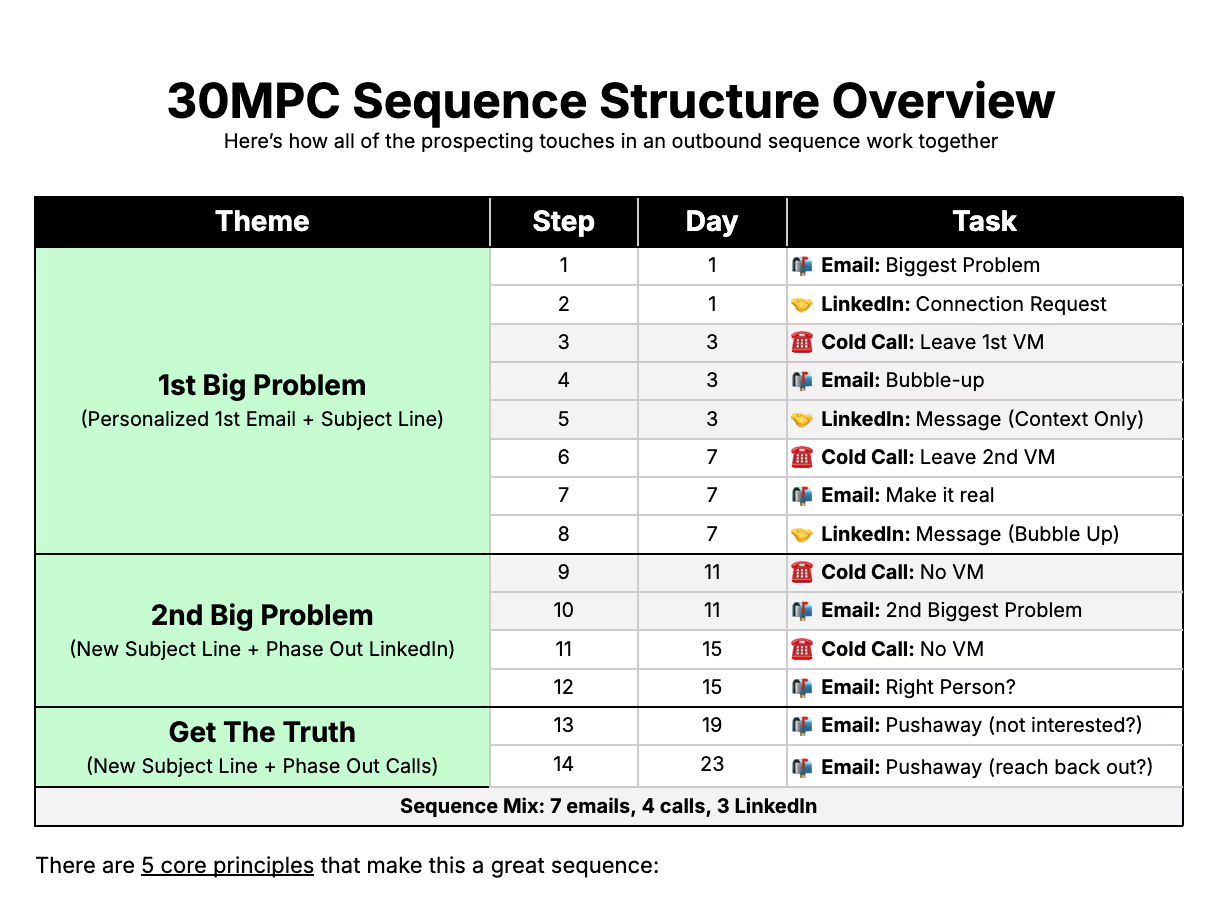If you’re in sales or marketing in 2024, you know that it’s become exponentially difficult to land a cold email in a prospect’s inbox, let alone garner a response.
Why is that?
To combat the mass-email-spam environment of today (now exacerbated by AI-powered email tools), Google and Yahoo rolled out new measures that required mass emailers to not exceed a spam rate of 0.3%.
If you don't meet those guidelines, your emails will be rejected or sent to spam to never to be seen.
So we met with a series of deliverability consultants, lead gen services, and high volume SDR teams to learn how to maximize your email deliverability.
We'll break down the the learnings in 6 steps to maximize your email deliverability:
- Rotate multiple email domains
- Warm up your emails
- Send relevant messaging to the right contacts
- Measure your email success regularly
- Choose the right sales engagement platform
- Set up your technical infrastructure
Let's roll.
1: Rotate Your Email Domains
Spread your emails across multiple domains to ensure you’re not blasting 500 emails a day from one email address. For example, I could send emails from armand@30mpc.io, armand@30mpc.xyz, armand.farrokh@30mpc.com, etc.
Reminder: A good sales engagement platform will auto-rotate those domains for you.
How many domains do you need?
General rule of thumb is 30 emails per day per email domain (+20 warm ups). So if a sales team plans to send 150 actual cold emails per day, they'll need 5 domains.
.avif)
It’s also recommended to have backup domains ready to rock and pre-warmed up (see below). If one domain gets into trouble, you’ll have one warmed up and ready to go.
2: Warm up your email
You need to warm up your inboxes before you start sending emails. There are email warm-up tools (if your SEP doesn't have one) that send emails to inboxes that will reply to you and boost your domain reputation to show a track record of getting positive replies.
When you're setting up your email warmer, warm up questions are:
- How long should the warm up be? 2 weeks.
- How many warm up emails should be sent per day? 20-40 depending on your anticipated email volume. The tool will help you ramp up to that number.
- What should the reply rate to warm up emails be? Anywhere from 30-40% should suffice. After all, a 100% reply rate to cold email would look sketchy.
- After the 2 weeks, how many cold emails should we send per day? Start with a max of 25 per email domain, and ramp up by adding 5 per week until you get to 50.
- Should you keep warming up your inbox as you start cold outreach? Yes, drop it to 10-20 warm up emails per day, and factor that into your daily sends above.
3: Send relevant messaging to the right contacts
While a lot of this can feel like IT mumbo jumbo and rev ops’ jargon, part of it comes down to just sound cold emailing mechanics.
- Prune bad emails from your list: Remove bounced and unengaged contacts. Revops can use a list cleaning tool to verify emails and ensure they’re up-to-date.
- Personalize your messaging. Your email can’t look like it was sent to thousands of others. Even if you're doing larger scale outreach, try to use trigger campaigns (ie: investor, funding round, new hire) with fillable variables throughout the email.
- Conversational language. This sounds obvious, but if your emails sound robotic or sound like a marketer, people will be so annoyed that they'll mark you as spam.
- Plain email text. No links, pictures, or other fancy graphics. Even your signature line should be clean, outside of an unsubscribe link.
4: Measure your email success regularly
.avif)
Previously, the important deliverability metrics was open rate.
But there've recently been reports that Gmail and Outlook are flagging emails with tracking pixels that allow you to track opens, which is why many deliverability experts argue that reply rates are the only true sign of deliverability health.
That said, reply rates can vary based on the quality of your emails as well, so we'll give you benchmarks for both, knowing that open rate tracking may change in the near future.
Your email open rate should be over 30% and your reply rate should be over 2%. Anything less means you might have a deliverability issue.
From there, you need to maximize your number of positive replies.
Otherwise, you want to keep bounce rates below 5% and spam rates below 0.3% You can use tools like Google Postmaster to track spam rates, MailReach to determine whether your emails are hitting the inbox. and Mx Toolbox to ensure your domains haven’t been blacklisted. (none of these are sponsors, just helpful links!)
5: Choose the right sales engagement platform
.avif)
The ability to enroll contacts in email sequences through a sales engagement platform has become table stakes.
Now, rev ops and sales teams need to identify a sales engagement platform that will help increase the likelihood of these emails actually being seen by our prospects.
Here's what to look for:
- Rotating email domains. Utilizing separate domains for cold email sending helps keep your company’s main email domain out of harm’s way, while rotating the domains you send from spreads out the sends so that each domain keeps a good reputation. More later.
- Automated email warm up. Before sending any cold emails, your email domain needs to be “warmed up” in order to be trusted by email providers as a reputable sender. More on this in a later section.
- Delayed email sending. Spreading your scheduled email sends out throughout the day reflects human behavior, whereas sending 500 emails all at once tips the email providers off that you may be a spammer.
- A/B Testing. Not just simply testing Copy A vs. Copy B, but actually substituting synonymous words to reflect human copywriting behavior.
- One-click unsubscribe. Really important, both Google and Yahoo are requiring an easier unsubscribe process for email recipients, and the request should be processed within two days. The easier you make it for a prospect to unsubscribe, the less of a chance they’ll go as far as reporting you as spam.
6: Set up your technical infrastructure
There are guidelines around your technical email infrastructure that tell the email providers that you're a legitimate sender.
However, we’re salespeople for a reason and should probably not go anywhere near these backend settings. We suggest working with your IT team or a consultant to ensure the below are set up correctly.
Here are the guidelines from Google to get you started. Our full checklist includes:
- DNS. Domain Name Service is how domain ownership is verified
- SPF. Sending Policy Framework helps prevent spoofing, which is someone else sending emails from your domain
- DKIM. Domain Key Identified Mail helps provide that you are sending emails from a valid mail server and that your emails are legitimate
- DMARC. Domain-based Message Authentication, Reporting, and Conformance is a way of connecting SPF and DKIM to ensure there is a safe and legitimate sender behind the email.
- CNAME. Adding a CNAME (“Canonical Name”) to your DNS records will allow for custom domain tracking from your inbox, rather than tracking opens and clicks through your sales engagement platform, which hurts deliverability.
Your Email Deliverability Checklist
.avif)
That's a wrap folks! if you follow the checklist above, you'll be golden.
There's a lot that goes into this from a rev ops perspective and it can feel overwhelming. If your sales org can use some guidance or help getting started on the path to better email deliverability, feel free to reach out and we'll get ya connected to the right folks.

















